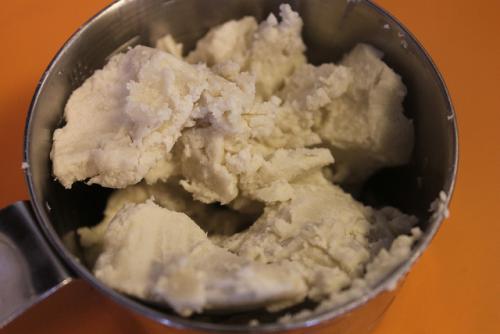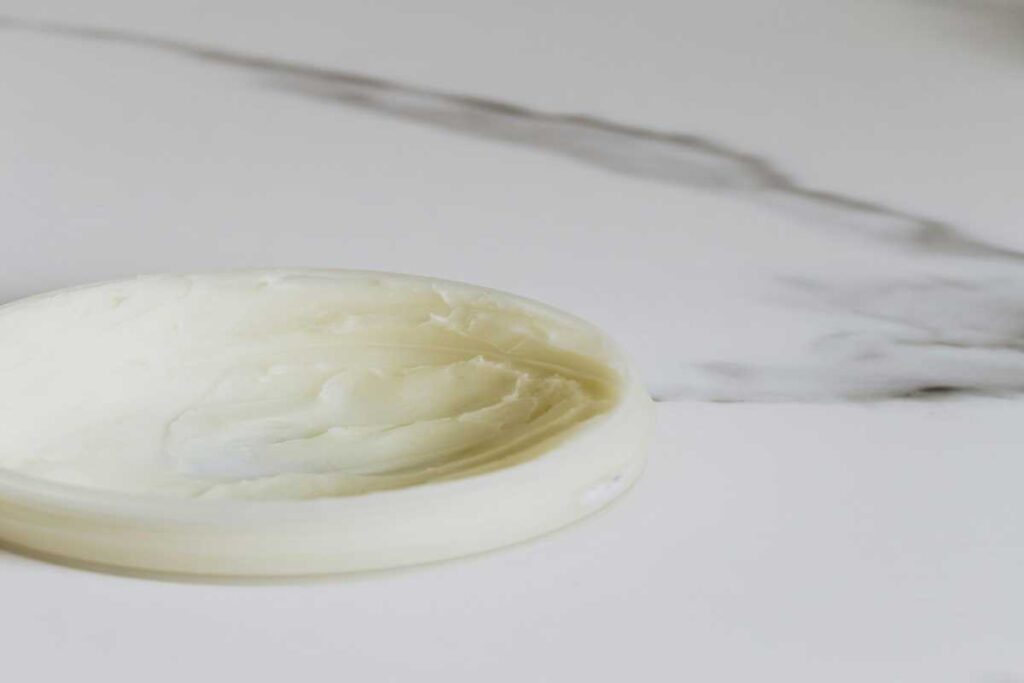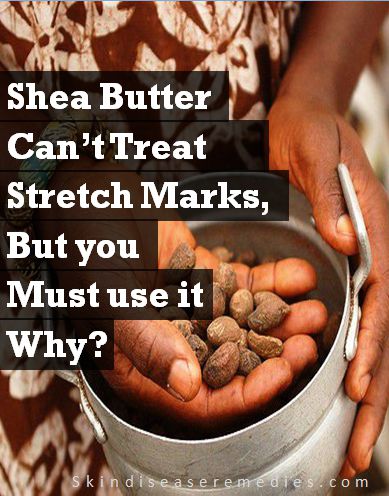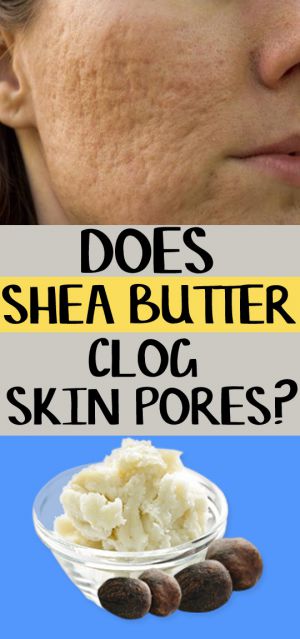
Skin discoloration is the common condition in women at present date. Sometimes it can occur since birth or many times due to pigmentation issues. People go to extreme lengths for treating this situation. They even go for chemical therapy or surgeries.
These costly methods, however, can cause fortune without providing you permanent results. Shea butter for skin lightening has been used as a replacement for those costly treatments by many people.
Shea butter can be one of the best remedies for the skin discoloration issue. Women get depressed to see the skin around eyes and mouth in a darkened state. There are effective products that claim to provide you better results in few days.
They are, however, combined with chemicals and unnatural ingredients that can harm our skin in a long term. One of the ways you can avoid using chemicals is to have Shea butter and make your skin brighter than ever.
What Causes Skin Discoloration?
1. Melanin
There are many reasons for discoloration and one of them is the melanin. It is an important component of your body. It is one of the polymers that are found usually in melanocytes cells. These cells combine together and form the surface or top layer of your skin.
The produced melanin is then spread around the skin and cells of the top layer. When there is some kind of difficulty in production, melanocytes cells can also form clusters and it can cause freckles and discoloration.
2. Lentigines in old age
Lentigines are nothing but aging spots that appear on your wrinkled face having 5 to 20 mm diameter. These spots can have different colors and most common are black or brown. Old age is also one of the reasons of discoloration that can occur on the surface of your skin.
3. Melasma
It is a condition that is caused due to the appearance of brown or tanned patches on your skin surface. It especially affects your face rather than any other parts of your body.
One of the causes of occurrence of this kind of discoloration is the imbalanced hormones. It is most common pregnant women and often it is called “a mask of pregnancy”.
Harsh UV rays can also cause this type of skin discoloration on your face. Melasma is said to occur in epidermis and dermis layers of your skin when the melanin is produced in an abnormal way.
4. Hemangiomas
This kind of discoloration is formed because of the blood vessel clumping. They appear anywhere on your body and even in your internal organs.
It can be present at the birth time. They are similar to birthmarks, just with different colors. They cause the color of certain part of your skin to change to red-blue, port-wine or salmon.
You cannot do anything about internal organs, but the natural treatment of applying homemade creams can help you in getting rid of those weird marks on your body.
5. Birthmarks
These types of spots are usually appearing on your skin since birth and look quite different from another part of your skin. These can have varied and most common are red, bluish-grey, black or brown.
The red colored blemishes are usually termed as a vascular birthmark. Another kind of birthmarks is caused usually because of the abnormality of blood vessels termed as a pigmented birthmark.
6. Post-inflammatory Hyperpigmentation
This type of discoloration is formed due to injury or just a reaction to it. If this condition is not treated on time, it can also lead to eczema and vulgaris.
7. Erythromelanosis follicularis
This is one of the conditions that is feared the most by women today. They start from follicles and forms dark spots in that particular area. It can also cause your skin to appear red.
Is Shea Butter Good for Skin Lightening?
Shea butter is one of those ingredients that have been commonly used in many branded products as one of the primary components. It has the ability to provide you bright skin with the removal of aging defects from your skin.
The American journal of Life Sciences stated that Shea butter is beneficial for skin brightening purposes. They did this by the demonstration of the practical use of Shea butter on your skin.
After the demonstration, the researchers found that the Shea butter can place a big impact on the skin tone and features. Your wrinkles and aging spots start to decrease, even if you are suffering from irritation or irritated skin.
According to other studies, Shea butter is seen to have many positive effects on the skin. They found that there are two important components of Shea butter that can aid in bringing out the lost brightness called as cinnamate esters and triterpene acetate. They have anti-inflammatory properties that prevent your skin to get free-radicals and avoid further damage.
It can also help in halting the tumor growth and development. These kinds of components have had been researching topic for many experts all around the world. Following are some of the positive benefits that you can receive from Shea butter.
- Vitamin E: Shea butter is rich in vitamins and certainly, Vitamin E is also one of them. It can provide you soft and moisturized skin tone.
- Vitamin A: It is helpful in providing you anti-wrinkle effects on your face. It is also helpful in lightening your skin and removing the discoloration spots.
- Catechins: This component is a rich source of antioxidant that can make your premature aging signs disappear in a short time period.
- Omega 6 and 3 fatty acid: These help you in getting repaired skin cells and ease your skin irritation. It provides you calming effects and renews your skin.
- Cinnamate esters and Triterpene alcohols: These are one of the important components of shea butter since they have anti-inflammation properties. They can provide you amazing benefits of getting rid of discoloration as well as signs of aging.
- Oleic and Linoleic Acids: These components in Shea butter make it better at retaining moisture in your skin. You can feel hydrated even with extremely dried skin.
Shea butter relieves you from dry skin, skin cracks and minor burns, sunburn, blemishes, wrinkles, small wounds, dry scalp, eczema, stretch marks, skin cracks, cracked feet and Itchiness.
It also provides you protection from pollutants that can cause you discoloration. Regular application will bring even skin tone and reduces acne.
How to Use Shea Butter for Skin Lightening?
There are many recipes of shea butter to whiten skin and discoloration issues. Some of the effective ones are as follows:
#1. Papaya, Beeswax and Shea Butter
Papaya is an effective fruit for the reduction of your blemishes and scars. It has many effective enzymes that can help you with the healing of scars or acne on your skin.
Beeswax is helpful in providing you hydrated skin and soothes it from any kind o irritation. It makes your skin softer.
The combination of these three components makes it possible for you to get brightened and spotless skin.
- Take half cup of Shea butter and add it to a clean bowl.
- Add 2 tbsp extract of papaya and mix well.
- Then add 1 tbsp beeswax and mix it again.
- Blend the mixture and make it a smooth paste.
- Apply it on your face.
- Make sure to empty it all in 3 days.
Also read: Is Papaya Good for Skin Whitening?
#2. Carrot Seed Oil and Shea Butter
Carrot seed oil is a natural anti-aging formula that is available in the market. It is rich in antioxidants that relies on your skin from free-radicals. It gives you fresh youthful look.
- Take one ounce of Shea butter in a bowl.
- Add 6 to 12 drops of carrot seed oil in it and mix well.
- Apply it on your face.
- Repeat this process every day and get brightened the face.
- Make sure to use no more than 6 to 12 drops of carrot seed per ounce of Shea butter.
#3. Chamomile, Rosemary and Shea Butter
Rosemary extract can help you to get protection against sun damage. It also protects your skin from getting free radicals. Since it has antiseptic properties, it can be used as a disinfectant. It also promotes healthy and smooth skin.
Chamomile is one of the primary ingredients after Shea butter that helps in brightening your skin. It is also used as an anti-aging element in many creams. It also boosts your immunity.
- Take half cup of Shea butter and add it to a clean bowl.
- Add 2 tsp Chamomile extract in it and mix well.
- Again, add 2 tsp of rosemary extract and mix again.
- Now apply the mixture on your face.
- Use this daily for better benefit.
#4. Lemon Essential Oil and Shea Butter
Lemon oil is one of the best components to get brightened and smooth skin since it has been used as an antiseptic. It brightens up your skin tone and cleanses your skin from deep. It is also helpful in removing your blackheads and treats your facial and bodily acne.
- Take an empty clean bowl and add one ounce Shea butter in it.
- Add 6 to 12 drops of lemon oil in it and mix well.
- Apply it on your face.
- Make sure to use no more than the prescribed drops of lemon essential oil.
Related: Is Lemon Essential Oil Good for Skin Lightening?
#5. Cocoa Butter, Almond Oil, and Shea Butter
Cocoa butter has many health benefits for your skin. It prevents your skin from getting dried and heals your chapped lips. It also helps in soothing your skin and provides relief form skin burn. It also fights infections and rashes. It also helps you to get rid of aging signs.
Almond oil, on the other hand, is good for getting flawless skin. It removes dark circles and prevents your skin from getting acne. It also gets you rid of acne and extra tan. It is helpful in the treatment of eczema and psoriasis.
- Take a clean bowl and add a half cup of shea butter in it.
- Add a half cup of cocoa butter and mix well.
- Furthermore, add 10 more drops of almond oil and mix well.
- Use this daily on your skin and get the brightened skin.
#6. Lemongrass EO and Shea Butter for Skin Lightening
Lemongrass oil is one of the powerful ingredients in fighting against acne and fungal infections on your skin. It also helps in reducing oily skin and provides you natural brightness. It clears the cellulite and makes your skin shine naturally.
- Take a clean bowl and add one ounce of Shea butter in it.
- Add 6 to 12 drops of lemongrass essential oil in it and mix well.
- You can also use other essential oils instead of this particular one such as turmeric essential oil and sandalwood essential oil.
#7. Coconut Oil, Baking Soda, and Shea Butter
Coconut oil is helpful in soothing your skin rashes and heals your skin fully. It lightens your skin and makes sure that your skin smoothens.
It is also used to lock moisture in your skin and provide the feeling of moisture. It brings about the original youthful features that you have had been longing for.
Baking soda is a natural skin exfoliator that helps in the removal of dry skin. It also has a natural capacity to soften your skin and make it free from dirt.
Also read: Is Coconut Oil for Skin Whitening?
- Take a clean bowl and add 3 tbsp of Shea butter in it.
- Furthermore, add 2 tbsp coconut oil and mix well.
- Also, add 2 more tbsp. baking soda.
- Mix the ingredients well and melt it all in a pan.
- You don’t have to boil the mixture in the pan, just make sure that it can be mixed together.
- Let it cool down to room temperature and add half lemon juice to it.
- Use this daily for better benefit.
- If the mixture becomes extra melted, you can add beeswax to harden it.
#8. Shea Butter, Olive Oil, and Vitamin E
Olive oil is a rich source of antioxidant and it can enhance the process of natural exfoliation. It boosts your beauty by increasing your skin tone.
Vitamin E frees your skin from free-radicals and slows down the aging process. It is also helpful in the reduction of wrinkles and it brings about brightened skin.
Chamomile has many positive properties for your skin such as anti-inflammation, anti-fungal, antiseptic, and antibacterial.
- Take half cup Shea butter in a clean pan and heat it
- Let it get warm and add 2 tbsp olive oil in it.
- Further, add 3 tbsp of vitamin oil and mix well.
- Add Chamomile about 10 drops and mix it again.
- Let the ingredients mix well and turn off the stove.
- Use this every day for better benefit.
#9. Shea Butter and Green Tea Extract
Green tea extract has anti-aging properties and it can help in improving your skin tone. It soothes your skin and prevents the sunburn.
- Take half cup Shea butter and place it in a heating pan.
- Add 3 tbsp extra virgin oil in it and stir well.
- Further, add 10 drops of carrot seed oil and stir it again.
- Add 3 tbsp green tea extract and stir it well.
- Use this on your skin daily to get better skin tone and younger look.
#10. Shea Butter, Aloe Vera, and Lavender Oil
Lavender is helpful for many skin conditions such as wrinkles, acne or psoriasis. It is also helpful in healing your cuts or wounds and makes your skin brightened.
Aloe vera is a known supplement that has many positive benefits for your skin. Since you can use it with Shea butter to lighten skin, it can yield you better benefits. It is a package full of many good qualities such as anti-inflammatory, wound healing and much more.
- Take a pan and add 3 tbsp Shea butter, 3 tbsp coconut oil, 1 tbsp beeswax, and 1 tbsp baking soda and heat the ingredients.
- Let the ingredients get together and stir it.
- Let it all cool down at the room temperature.
- Further, add lavender and aloe vera to it.
- Use this on your skin to get brightened tone and freedom from unwanted scars.
Important Points
You must remember following points to make sure that you don’t end up with darkened or sun burnt skin. There are many ways you can use shea butter for skin lightening only if you follow the prescribed method and take care of points mentioned below:
- Make sure to use sunscreen every day before going out to protect tan. You can find natural sunscreens or many recipes.
- Make sure to use the above methods every day to avoid the dark or discolored skin.
- You can also use lemon directly on your face. Just slice the lemon and take the water out. Thereafter, scrub it directly on your face. You can use one of the above methods with this one for better benefit.
- Make sure to keep Shea butter recipes in a cool place away from sunlight.
- Avoid using recipes of Shea butter if you have its allergy.
- Make sure you take a limited amount of essential oils while using its recipes with Shea butter. If not, you can one end up damaging your skin.
- You can also use yogurt as a replacement of lemon scrub to get brightened and youthful skin.
Darkened and discolored skin is not a worrying subject if you are not suffering from a harmful disease. The above-mentioned methods are the tested and effective easy to heal your skin naturally.




